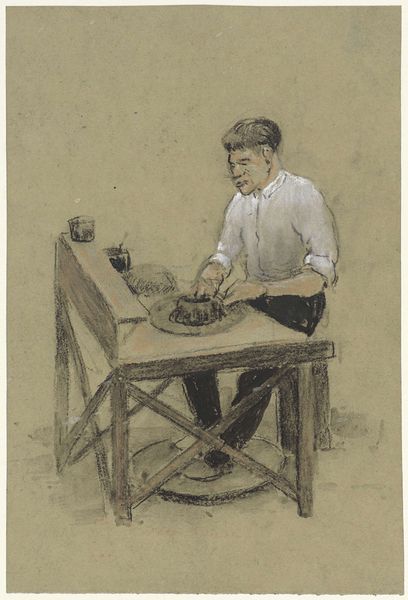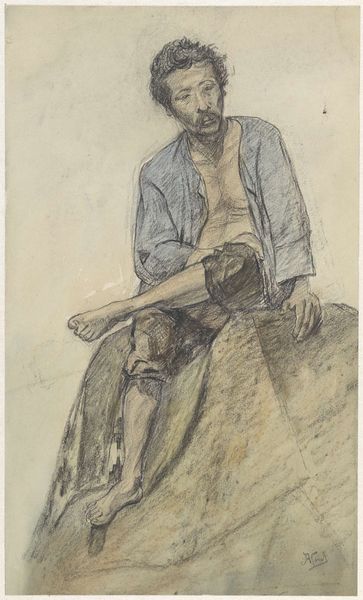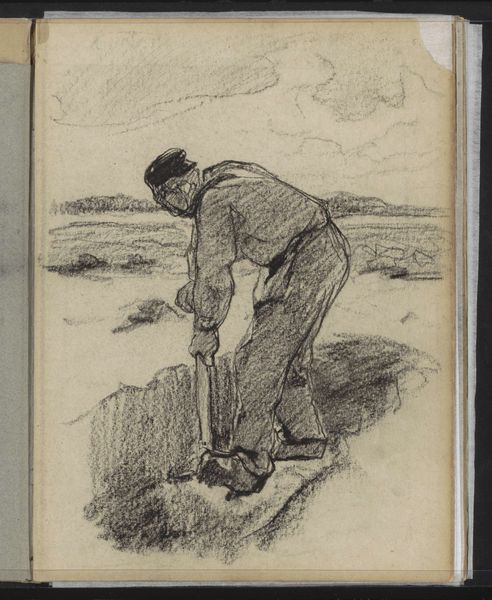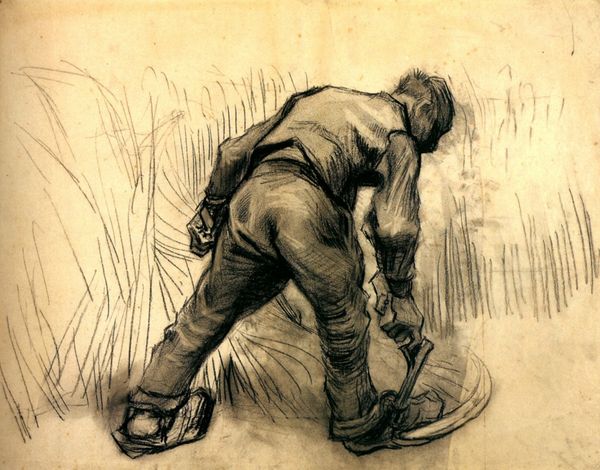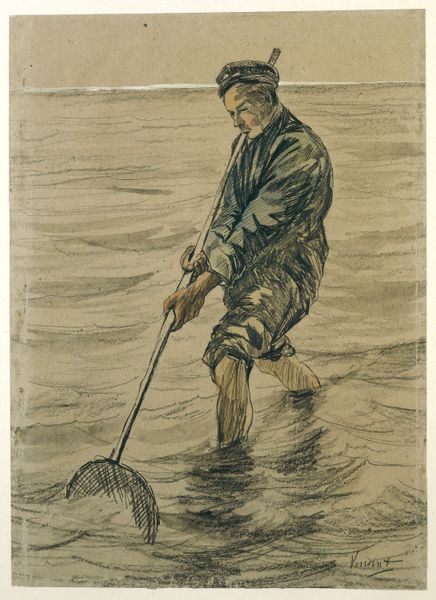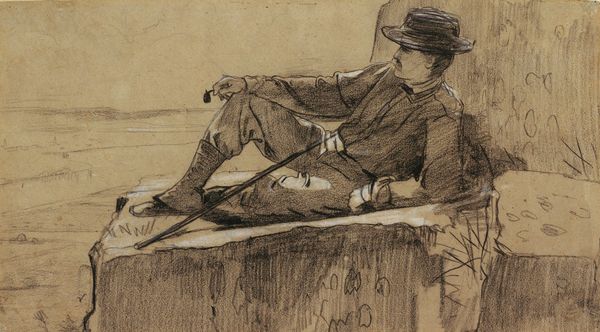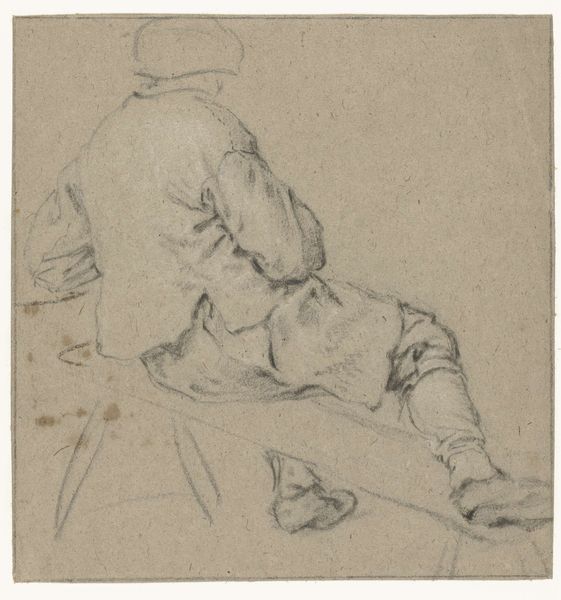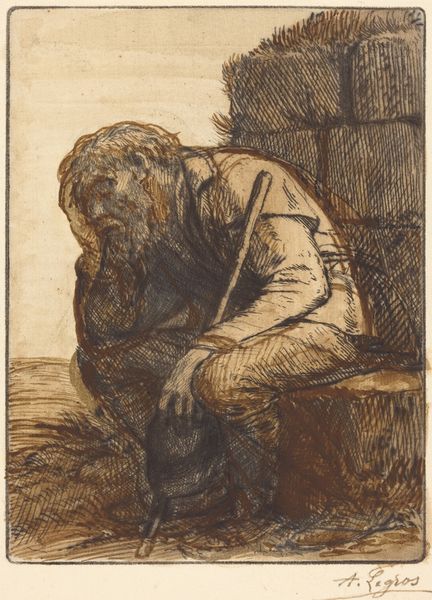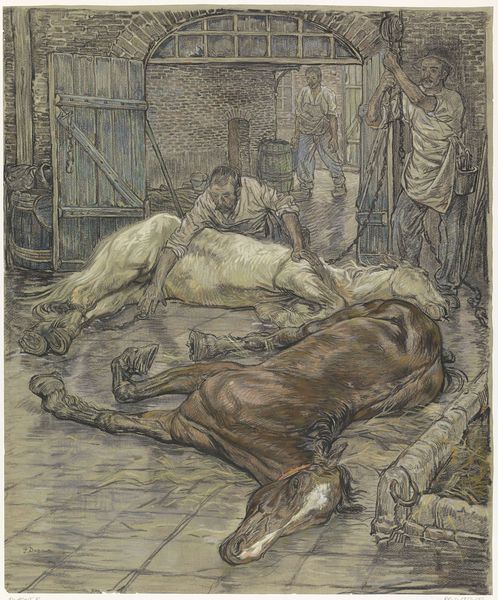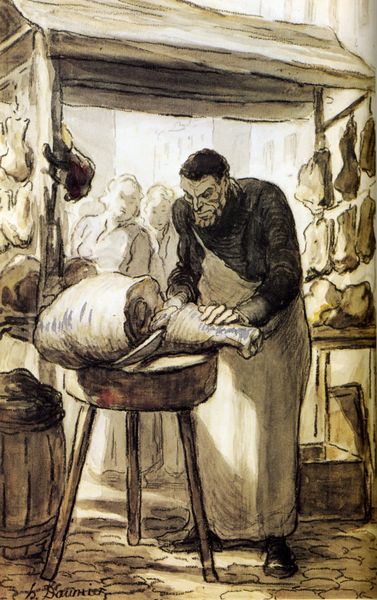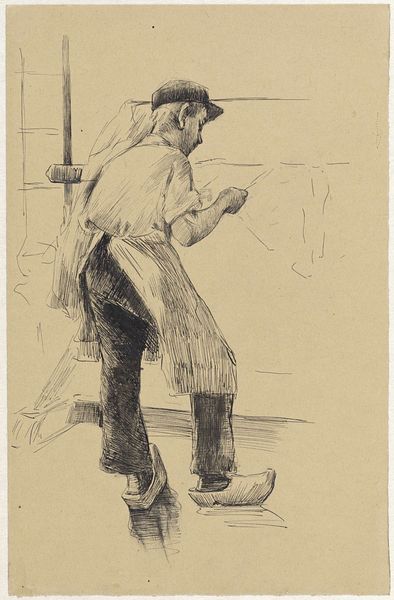
Dimensions: height 300 mm, width 234 mm
Copyright: Rijks Museum: Open Domain
Editor: This is Jan Veth’s "Boer, op zijn knieën," or "Farmer on his Knees," created sometime between 1874 and 1925. It’s currently housed in the Rijksmuseum. It looks like a watercolor – quite muted, almost somber, despite portraying a very commonplace scene. What's your take on it? What do you see here, beyond the immediate depiction of labor? Curator: Ah, Veth's farmer. Yes, the watercolor medium lends itself to that understated feel, doesn't it? For me, it whispers of a certain humility. The pose, on his knees, it’s not just practical for the task; it evokes a sense of being grounded, of being intrinsically connected to the earth. See how the figure almost melts into the ground beneath him? It's like he is born out of it, connected. What feelings are stirred within you, when gazing upon this intimate tableau? Editor: I hadn't thought about it like that, but the merging with the earth definitely comes through. It’s more than just a man working, but a quiet meditation on the relationship between humans and the land that sustains them. Curator: Exactly! The “genre-painting” aspect blends with something deeper. Now, think about the time. Industrialization was pulling people towards cities. Maybe Veth, through this piece, is holding onto—or even mourning—a disappearing way of life, a more direct relationship with nature. What do you make of his gaze being cast downward? Editor: Maybe the downward gaze and posture suggest not only humility but also a preoccupation. It's as though he's completely absorbed in his labor. The lack of a clear narrative creates an invitation for reflection on labor, value, and being. Curator: A beautiful observation. There is that possibility to be pensive. What I glean from this gentle work, is that a beautiful moment to respect what’s always been around, even if it disappears or changes right before our very eyes. Editor: Absolutely! Thank you for sharing that with me, and connecting it to what’s more broadly going on. This has definitely enriched my understanding of this piece.
Comments
No comments
Be the first to comment and join the conversation on the ultimate creative platform.
